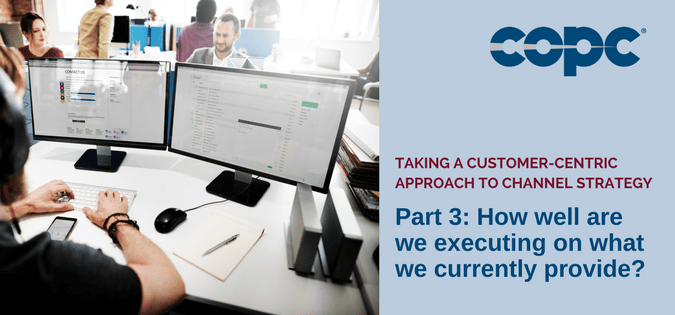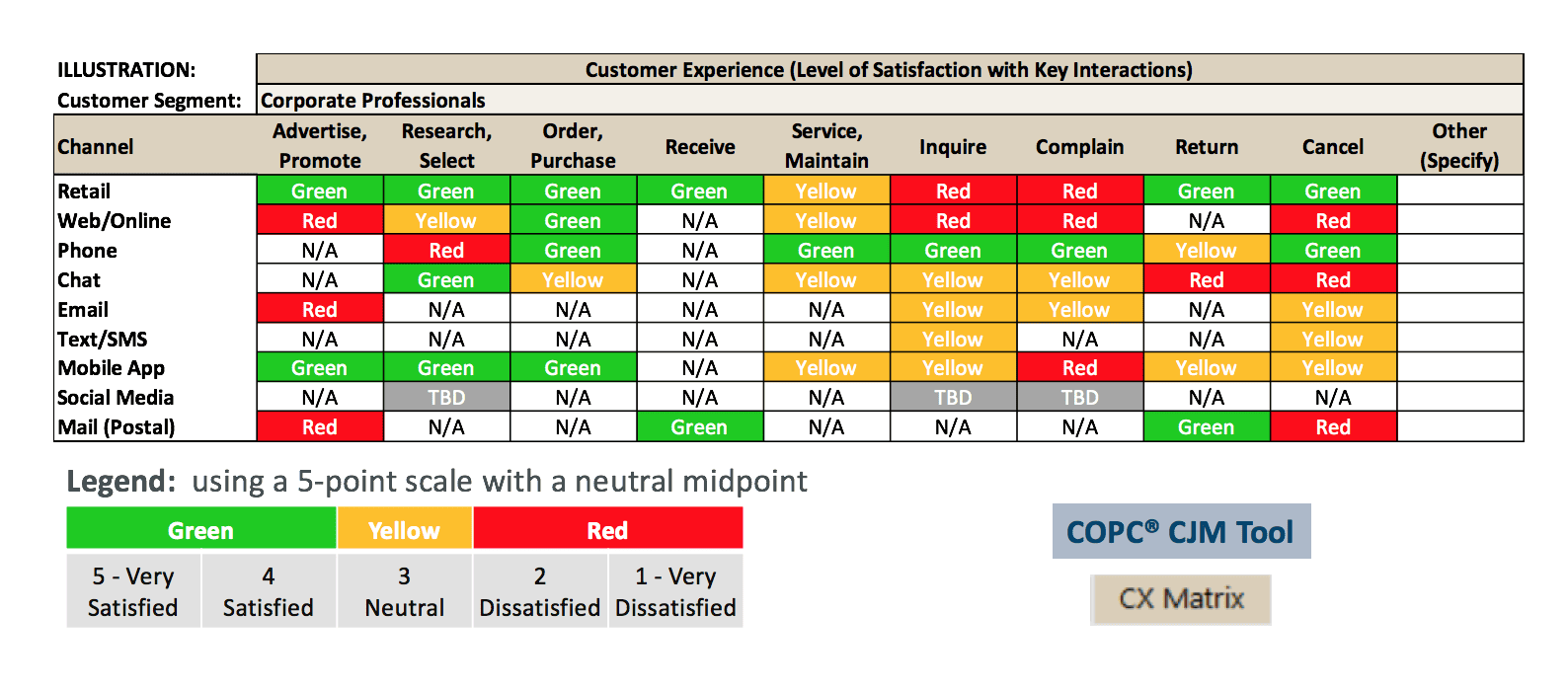
October 26, 2017
Part Three: How well are we executing on what we currently provide?
It’s not uncommon for companies to find themselves wondering if they are offering the right channels, why they are offering those channels, and what their long-term channel strategy should be. Even though it is easy to get excited about offering the latest and greatest channel solutions to customers, it is advisable to take a step back and view things from the customer’s perspective when developing a channel strategy. There are four essential questions companies should be asking themselves along this journey. We will review each one of these during this four-part blog series, and they are:
Part 1: What channels do we offer, and what are our customers using?
Part 2: What channels do our customers want, and what capabilities do they expect?
Part 3: How well are we executing on what we currently provide?
Part 4: Have we identified the gaps and taken corrective action?
________________________________________________________
Part 3: How well are we executing on what we currently provide?
Once you have determined your channel offerings and what your customers use/want, it is critical to evaluate how well you are actually performing in the channels you do provide. You need to know where the gaps are before you can know where you need to focus improvement efforts or execute a channel strategy. Building a customer experience (CX) matrix and conducting customer journey mapping are two effective approaches to evaluate your current channel execution. In this post, we discuss the value of these approaches, as well as what they can reveal about a program.
CX Matrix
A CX matrix is similar to the channel matrix (which was reviewed in Part One of this blog series). Like the channel matrix, a CX matrix is composed of the various channels currently offered by a company (on the left) and the various types of interactions (along the top). But rather than filling the cells in with volume, as in a channel matrix, the CX matrix cells are filled with customer satisfaction (CSAT) results. By completing such an exercise, it becomes possible to understand channel performance across all engagement types.
Figure 1 is an example of a CX matrix, found in COPC Inc.’s Customer Journey Mapping Certification course materials. In this case, a matrix is formed using nine channels (left) and nine types of contact (top). For the sake of simplicity, this example uses color codes to represent CSAT results, but the actual percentages can also be used to provide even greater granularity.

Figure 1: CX Matrix. Source: COPC Inc. Customer Journey Mapping Certification course materials
By putting CSAT results into the CX matrix, it becomes much easier to spot opportunities for improvement. For instance, Web/Online is performing poorly across all contact types, except for Orders and Purchases. By creating a CX matrix, a company creates a framework for uncovering customer pain points.
Customer Journey Mapping
Customer Journey Mapping (CJM) is another way to understand how well you are executing from your customer’s perspective. The purpose of a CJM project is to map the end-to-end customer experience, doing so across journeys, channels, contact types, and even customer personas.
CJM projects can also vary in focus, running the gamut from very broad journeys involving many individual interactions and transactions to very specific interaction types. The output of a CJM project is the map itself, often in the form of a diagram or infographic, highlighting key interactions as well as the thought process, actions, experiences and emotions of a particular customer persona.
The customer journey map(s), when combined with the insights and perspectives derived from things like customer surveying and focus groups, tell a very powerful and detailed story about a brand. This information proves critical in the fourth and final chapter of this blog blog series, which has everything to do with finding and closing gaps, setting the stage for truly exceptional customer experiences.
Check back tomorrow for the next blog post in the series, focusing on this question:
Have we identified the gaps and taken corrective action?
__________________________________________________
Read Part One: What channels do we offer, and what are our customers using?
Read Part Two: What channels do our customers want, and what capabilities do they expect?